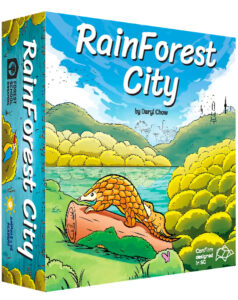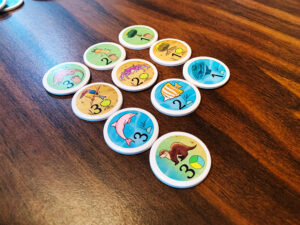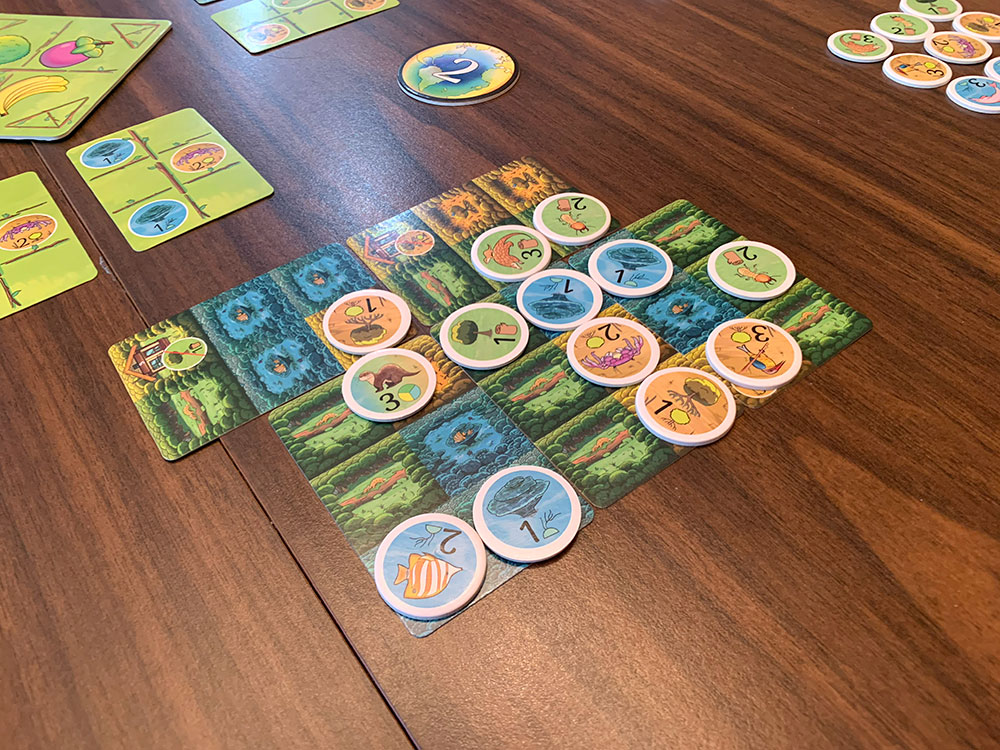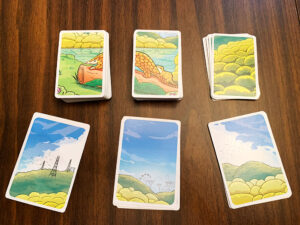 For most of my life, I’ve lived in the suburbs where wildlife is a feral cat or birds. I was fortunate enough to spend a lot of summer vacations camping at the mountains and beaches of Southern California. So I’ve always enjoyed the great outdoors and have a fond appreciation of nature. Nature is awe-inspiring when you consider the variety of environments and diversity of plants and animals around our planet. We need to protect and preserve some of these unique environments both for future generations to enjoy as well as for scientists to study.
For most of my life, I’ve lived in the suburbs where wildlife is a feral cat or birds. I was fortunate enough to spend a lot of summer vacations camping at the mountains and beaches of Southern California. So I’ve always enjoyed the great outdoors and have a fond appreciation of nature. Nature is awe-inspiring when you consider the variety of environments and diversity of plants and animals around our planet. We need to protect and preserve some of these unique environments both for future generations to enjoy as well as for scientists to study.
Rainforest City has the players trying to reverse that effect by repopulating the Singaporean landscape. In this competitive or cooperative game players are trying to build the best balanced landscape across three different ecosystems.
Gameplay Overview:
Each game is 12 total turns which means games with more players have fewer rounds in them. On a player’s turn, they turn the square fruit dial and take both cards their fruit icon is pointing at. The other players get to pick one of the two cards their fruit is facing. Cards are either terrain, which gets added to your Landscape, or Flora or Fauna cards which add tokens to your landscape.
Selected terrain cards can be played in any orientation as long as one square lines up with the existing terrain. Any terrain can be adjacent to any other terrain. Some terrain cards come with icons on them that add flora or fauna. Some have houses that are worth points but you lose one point for flora or fauna tokens adjacent to them. They also make you discard a specific flora or fauna when the card is played, if you have one on your landscape.

Flora and Fauna cards can also be played in any orientation and only fauna matching their habitat can be placed. Ones that don’t line up with a spot in your landscape or end up in the wrong habitat will be placed in your compost pile where each token is worth negative one point at the end of the game.
You score one point for each Flora in your landscape and supported fauna. Supported fauna has their food source in the same ecosystem. So, in the water habitat fish needs coral and pink dolphins need fish. Fauna are worth two or three points and river otters are wild and can live in any of the habitats.
Cooperative plays similarly with the exception of the addition of each player having three objective cards. The players need to complete a number of these objectives before anyone has five tokens in their compost pile. Each player can only contribute to their own objectives which will often adjust the gameplay from being focused on keeping habitats balanced to loading up on a specific type of flora or fauna.

Game Experience:
The game plays quickly and players are invested the whole time as they get to pick and place cards throughout the game limiting downtime. The graphic design and art are both vibrant and clean with plenty of representation of Singaporean wildlife. The pangolins on the card backs and tokens are particularly adorable. As are the river otters that might be nature’s cheat mode to get people to say “awwwww.”
Setting up the first time took a little while to figure out which cards were the starting terrain cards (they’re the nine forested back ones). I can’t place the reason, but there was something about the presentation of the rules in the rulebook that took me a while grasp but everything is concisely written there.

After the initial confusion, it was smooth sailing. Rainforest City has streamlined gameplay that consists of pick two cards, play them, and add/subtract tokens as needed. I really enjoyed the limited downtime between turns as I was engaged on every player’s turn as I took and played cards. The core spatial puzzle of trying to figure out how to support the fauna while also adding more terrain to hold more plants and critters was a lot of fun. Some players may get a little analysis paralysis but with only eight cards to choose from there’s at least a limit to how long someone can stare at the cards. Another, hopefully, AP killing aspect is that even when nothing fits perfectly, the penalty of minus one point per fauna that doesn’t fit isn’t too punitive in competitive mode.
The cooperative mode may have the players talking about what each other needs so the active player can set up their partners for success. The game at two players, which is identical to solo except for the extra human at the table, felt easier to manage than three players. I didn’t try it at four but I’d expect it to be the most challenging as you try to find the least worst combination for the whole table. The scalability of cooperative ranges from cake walk to brain burning as you go from Easy to Hard difficulty which is great for a family weight game. One small downside, there are only twelve objective cards in the game so all of them get used in a four player game.

This game can also fall prey to the Alpha player/predator (which, as always, is a player problem, not a game issue). The players only need to complete a number of objectives between them so, outside of hard mode, your dead weight friend can do the bare minimum while you complete all your objectives and you might still pull out a win.
Both modes create a small spatial puzzle to solve either on your own or with your friends. Except at maximum difficulty, this is still a fairly relaxed game of placing plants and animals in your landscape. I almost added this as my entry for our Most Relaxing Games Quest list. Only in the hardest solo mode where you have to complete all of your objectives did the round track ticking me down start to stress me out (and, for what it’s worth, I generally lost those games).
If I had to pick on something, it would be that the game plays out similarly each time reducing the discovery. But this is also a game where players can improve at playing and challenge themselves with adding objectives in competitive mode, as the rulebook suggests, which could give it some extra legs for gamers wanting a meatier experience.
Final Thoughts:
I can’t think of a comparison to Rainforest City which makes it unique in my collection for how it plays but there’s also something familiar with placing tokens in the proper location to collect sets of flora and fauna. It’s streamlined but has both enough choices to keep players invested as well as minimal downtime. And despite having no major criticism for the game I can’t point to any significant wow factor for it either. Overall it’s a very good family weight game with a nature based theme and even comes with an educational booklet about the fauna and flora featured in the game.
Final Score: 3.5 Stars – Rainforest City is a very solid family weight spatial puzzle game with minimal downtime that has players building a balanced landscape of flora and fauna.
 Hits:
Hits:
• Simple turns that allow you to work towards long term goals
• Engagement on other players’ turns keeps downtime to a minimum
• River otters and pangolins *fawns over cuteness*
Misses:
• Limited discovery after a few plays
• All objective cards are used in four player games
Source: Board Game Quest





